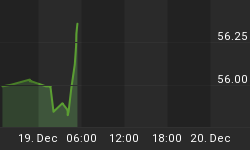The Employment Cost Index just printed +0.4%, below expectations of +0.5%.
The ECI consists of two parts: wages and benefits. The benefits component is very hard to seasonally adjust - for example, while companies tend to adjust benefits on a calendar year, they don't do it EVERY calendar year. So it is usually important to separate the two components.
And thus, we find that the rise in benefits was somewhat soft, but the increase in wages was +0.52%, the biggest rise since 2008 Q3 (see Chart, source BLS).

As I constantly remind people, wages follow inflation and do not lead inflation, so for me this uptick confirms the inflationary dynamic rather than starts me worrying. But those who worry about wages causing inflation will find reason to be concerned here, even though the overall ECI number looked benign.
(Wages do play a role in causing inflation to be more persistent, so this matters in that sense as well).
















